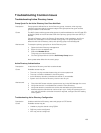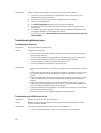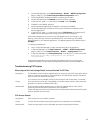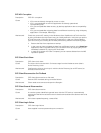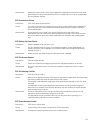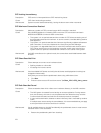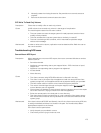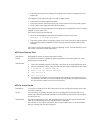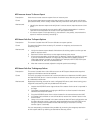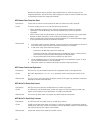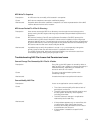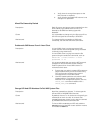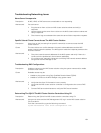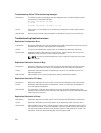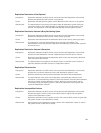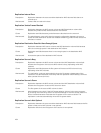
NFS Insecure Access To Secure Export
Description User tries to access a secure export from an insecure port.
Cause Secure export requirement means that the accessing clients must use a well-known
port (below 1024), which usually means that they must be a root (uid=0) on the client.
Workaround
• Identify the relevant export and verify that it is set as secure (requires secure client
port).
• If the export must remain secure, see the NFS client documentation in order to
issue the mount request from a well-known port (below 1024).
• If a secure export is not required (e.g., the network is not public), ensure that the
export is insecure and retry accessing it.
NFS Mount Fails Due To Export Options
Description This event is issued when NFS mount fails due to export options.
Cause The export list filters client access by IP, network or netgroup, and screens the
accessing client.
Workaround
1. Verify the relevant export details. Write down all existing options so that you are
able to revert to them.
2. Remove IP/client restrictions on the export and retry the mount.
3. If the mount succeeds, verify that the IP or domain is explicitly specified, or that it
is part of the defined network or netgroups. Pay attention to pitfall scenarios,
where the network netmask is not intuitive, for example, 192.175.255.254 is part
of 192.168.0.0/12, but not of 192.168.0.0/16.
4. After the mount succeeds, adjust the original options accordingly.
NFS Mount Fails Due To Netgroup Failure
Description This event is issued when client fails to mount an NFS export because the required
netgroup information cannot be attained.
Cause This error is usually the outcome of a communication error between the NAS system
and the NIS/LDAP server. It can be a result of network issue, directory server overload,
or a software malfunction.
Workaround Repeat the following process for each configured NIS server, each time leaving just a
single NIS used, starting with the problematic NIS server:
1. Inspect the NIS/LDAP server logs and see if the reason for the error is reported in
the logs.
2. Complete a network test by pinging the NAS from a client located in the same
subnet as the NIS/LDAP server.
3. Ping the NIS/LDAP server from a client located in the same subnet as the NAS.
4. If a packet loss is evident on one of the above, resolve the network issues in the
environment.
5. Using a Linux client located in the same subnet as the NAS and configured to use
the same directory server, query the netgroup details from the NIS/LDAP server
using the relevant commands. Ensure that the reply is received in a timely
manner (up to 3 seconds).
You can temporarily workaround the problem by removing the netgroup restriction
on the export and/or by defining an alternative directory server.
177



